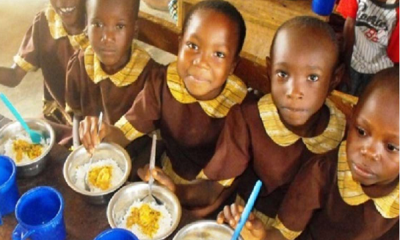Health
‘They may have anthrax’ — NCDC warns against slaughtering sick animals for Eid al-Adha
The Nigerian Centre for Disease Control (NCDC) has warned Nigerians against the slaughtering of sick animals for the Eid al-Adha celebration.
Anthrax is an infection caused by the spore-forming bacteria, Bacillus anthracis. It typically affects ruminants such as cows, sheep, and goats.
It is a zoonotic disease — transmissible from contaminated animals to humans.
Humans can get infected if they handle or are involved in the slaughter of a sick animal, or are in contact with contaminated animal products.
However, anthrax is, not spread from person to person by casual contact.
Symptoms of the disease include cough, fever, and muscle aches, and if not diagnosed and treated early it may lead to pneumonia, severe lung problems, shock and death.
The disease has claimed some lives in northern Ghana.
In a statement on Tuesday, the NCDC said that there is currently no suspected or confirmed case of anthrax in Nigeria.
The agency noted that the country’s close relationship with Ghana through border movement of humans and animals, and strong trade relations “comes with a high risk of importation of the disease”.
NCDC said the outbreak of anthrax outbreak in Ghana poses a great public health risk to Nigeria due to the dangerous and highly transmissible nature of the disease.
”This is particularly important due to the upcoming Eid-el-Adha religious festivity. It is expected that there will be significant movement, high volume trade, and slaughter of cattle and other livestock animals in preparation for or as part of this Muslim festival,” the statement reads.
“The NCDC therefore, advise Nigerians to avoid all non-essential travel to the northern region of Ghana and to exercise caution when buying livestock from Nigerian states bordering Benin, Chad, and Niger, and from Ghana and Togo via waterways.
“Carefully observe rams or cattle to be slaughtered for the festive period for signs of sickness before slaughtering. Do not slaughter animals at home, rather make use of abattoirs or slaughter slabs. Avoid contact with meat/bush meat or animal by-products such as skin, hides (“pomo”) and milk of a sick or dead animal,” the statement reads.
“Do not slaughter sick animals. Slaughtering the sick animal can expose the anthrax spores which can be inhaled by humans if the animal is infected with anthrax.
“Do not eat products from sick or dead animals. Hunters should not pick sick or dead animals from the bush or forest to be sold for human consumption. Report any incidence of the sudden death of animals to the nearest veterinary authorities or the state ministry of agriculture
“Anthrax is treatable when reported early. Visit the nearest health facility if you notice any of the signs and symptoms associated with anthrax for prompt treatment.”























